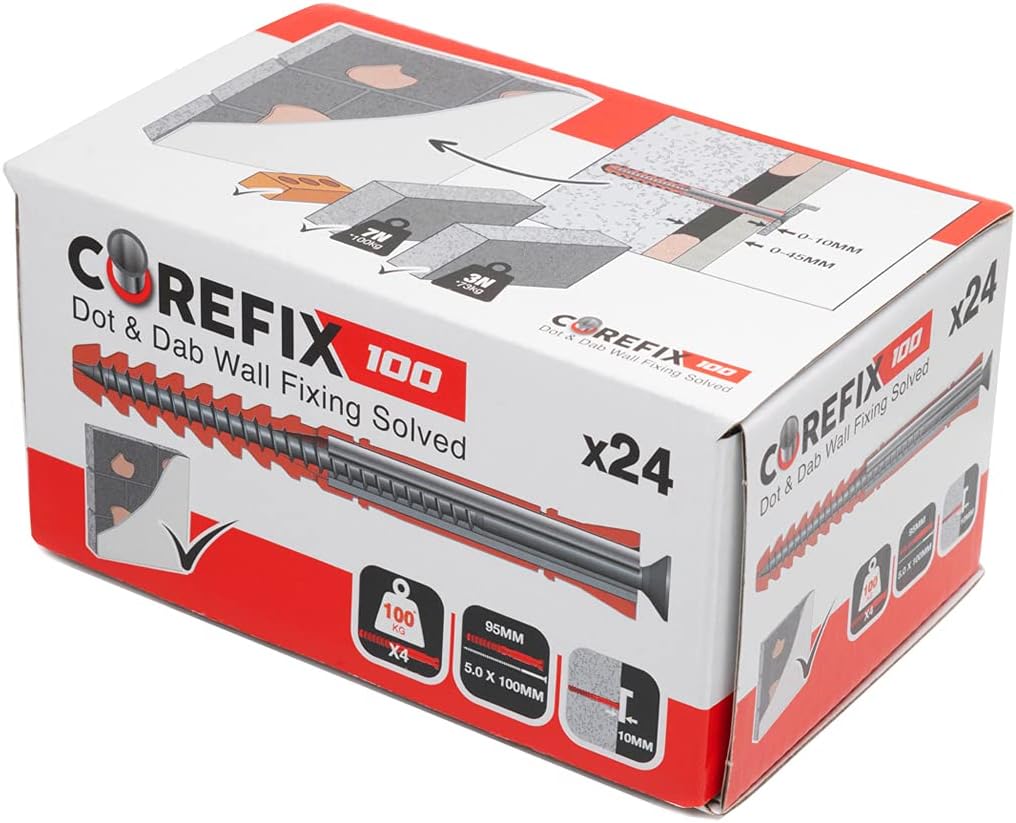About this deal
Plasterboard walls, on the other hand, will almost always sound hollow; you can determine this by giving the wall a quick knock. Any competent DIYer will be able to tackle it with relish and enthusiasm and you might well be surprised at how good the results look. offer up bracket and mark the fixing points (normal caveats apply about ensuring you watch out for pipes and cables, and that you have a sound wall to fix to. I use nylock nuts for the back fixings so they stays in place when the final surface nuts are tightened.
DriLyner Dab wall lining system | British Gypsum DriLyner Dab wall lining system | British Gypsum
This technique is often used when the surface to which the plasterboard is being fixed is uneven, as it helps to create a smooth, level surface without using wet plaster. or 8mm diameter rod will be fine for hanging a plasma screen as long as the wall is sound and you fix with 6 points. This is because dot and dab does not always create a completely airtight seal, which means that sound can travel through the wall. Gyproc DriWall Adhesive is the tried and tested way of achieving a perfectly level wall when dabbing plasterboard linings to existing backgrounds like masonry walls.Provides a thermally responsive environment with quick heating time as a result of positioning the insulation layer on the warm side of the room. Use offcuts of plasterboard to keep the plasterboard off the floor (Image credit: British Gypsum) Is Dot And Dab Better Than Plastering? working one hole at a time - part fill a hole with some resin, then take a stud and insert it with a clockwise screwing motion. Minimal loss in room space due to narrow drylining cavity plus the thickness of the Gyproc plasterboard and any finish applied.
Fixings - The Ultimate Heavy Duty Plasterboard Fixing Bullfix Fixings - The Ultimate Heavy Duty Plasterboard Fixing
Minimal thermal bridging due to the use of non-metallic gypsum adhesive dabs and thermally-broken fixings. A good quality dot and dab adhesive will help to keep the board in place and prevent it from falling off. The downside of dot and dab is that the plaster is more prone to cracking than a traditional wet plaster finish. This technique involves attaching the plasterboard to metal studs or timber studs that have been placed at regular intervals along the wall.DriLyner Dab systems allow for a wide range of U-values to be achieved to suit project requirements, through our extensive portfolio of Gyproc ThermaLine laminate types and thicknesses. Once the plasterboard is in position use the marks on the floor and wall and draw lines on the plasterboard using the spirit level. Since you are avoiding the faff of wet plastering, you can also paint your application in record time – as you cut out applying and drying times. Follow our step-by-step guide to find out how to prep your walls, mix the adhesive and measure up for the perfect finish. However, when weighing up wet plaster vs drylining– or dot and dab as it's also known – it is important to note that dot and dab is not as durable and robust as wet plastering.
Dot and Dab: What Is it? - Materials Market Dot and Dab: What Is it? - Materials Market
DriLyner Dab is a lining system for either masonry or plastered backgrounds, where Gyproc Plasterboards or Gyproc ThermaLine insulated boards are fixed directly and simply using Gyproc DriWall Adhesive and Gyproc Sealant. When they're used in brick there's no real guarantee that you'll hit something solid - could be mortar - or that the bolt won't be close to the edge of a brick so it fractures when expanding as it is tightened. If you would like to change your settings or withdraw consent at any time, the link to do so is in our privacy policy accessible from our home page. Dot and dab (also known as dry lining) is most commonly used to fix plasterboard to walls, but it can also be used to fix boards to ceilings, or insulated plasterboards to walls. Allows Gyproc ThermaLine laminates to be installed to existing plastered surfaces providing they are sound and free of damp.For dot n dab you need something that will anchor in to the solid wall behind and provide a stand-off to take the weight/pressure away from the plasterboard surface. Wide range of U-values achievable to suit project requirements through our extensive selection of Gyproc ThermaLine laminate types and thicknesses. Some of our partners may process your data as a part of their legitimate business interest without asking for consent.
 Great Deal
Great Deal 